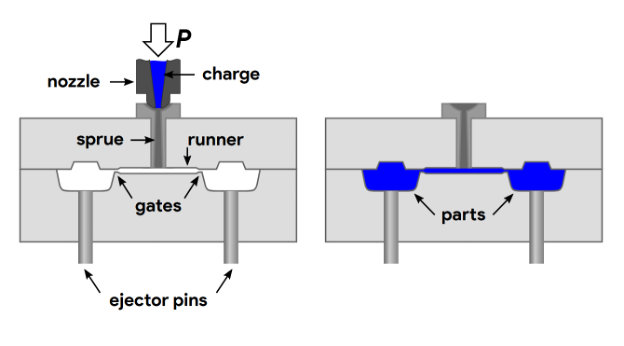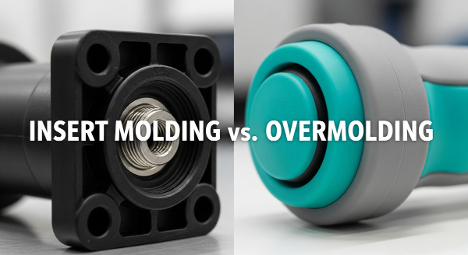Contents
In the world of manufacturing and design, rapid prototyping and 3D printing are essential tools. They help engineers, designers, and innovators bring their ideas to life quickly and efficiently. But what exactly are these technologies, and how do they differ? Understanding the differences between rapid prototyping and 3D printing is crucial for anyone involved in product development or manufacturing.

What is Rapid Prototyping?
Rapid prototyping is a group of techniques used to quickly fabricate a scale model of a physical part or assmebly using three-dimensional computer-aided design(CAD) data. It has its roots in the 1980s when new techniques began to emerge to create prototypes faster and more efficienyly than traditional methods.
Techniques Used in Rapid Prototyping
- Subtractive Process: These involve removing material from a solid block to create the desired shape. CNC machining is a common example.
- Additive Processes: These involve adding material layer by layer to build up a model. This category may include 3D printing technologies.
- Other Methods: Techniques like injection molding are also used in rapid prototyping for certain applications.
Benefits and Applications
Rapid prototyping offers several benefits, including speed, flexibility, and the ability to test a design before full-scale production. It's used in various industries, from automotive and aerospave to consumer goods and healthcare, allowing for the testing of form, fit, and function early in the design process.

What is 3D Printing?
3D printing, also known as additive manufacturing, is a specific type of rapid prototyping. It involves creating a three-dimensional object from a digital file by adding material layer by layer. This technology has revolutionized manufacturing by allowing for the creation of complex shapes and designs that would be difficult or impossible to achieve with traditional methods.
Overview of 3D Printing Technologies
- Fused Deposition Modeling(FDM): This is the most common type of 3D printing, where material is extruded through a nozzle layer by layer.
- Stereolithography(SLA): This technique uses a laser to cure liquid resin into solid plastic in layer-by-layer process.
- Selective Laser Sintering(SLS): Involves using a laser to sinter powdered material into a solid structure.
- Other Methods: Techniques like Direct Metal Laser Sintering(DMLS) and PolyJet are also used for specific applications.
Benefits and Applications
3D printing offers benefits like precision, customization, and material waste. It's used in industries such as healthcare for creating custom implants and prosthetics, in automotive for producing lightweight parts, and in consumer goods for personalized products.

Key Differences Between Rapid Prototyping and 3D Printing
Scope and Terminology
- Rapid Prototyping: An umbrella tern that includes various techniques for creating prototypes quickly.
- 3D Printing: A specific method within rapid prototyping that builds objects layer by layer.
Technological Processes
- Rapid Prototyping: Encompasses a wide range of technologies, including subtractive and additive methods.
- 3D Printing: Specifically refers to additive manufacturing techniques.
Materials Used
- Rapid Prototyping: Utilizes a vatirty of materials depending on the technique, including plastics, metals, and ceramics.
- 3D Printing: Typically uses specific materials suited for additive processes, such as thermoplastics, resins, and metal powders.
Applications and Industry Use
- Rapid Prototyping: Used for prototyping, production, and beyond. Suitable for industries like aerospace, automotive, and consumer products.
- 3D Printing: Favored in industries that benefit from customization and complex geometries, such as healthcare and education.
Cost and Time Efficiency
- Rapid Prototyping: Can be costlier due to the variety of techniques and materials used, but offers fast iteration.
- 3D Printing: Often more cost-effective for small runs and complex designs but can be slower for larger, intricate parts.
Advantages and Disadvantages Comparison
| Technology | Advantages | Disadvantages |
| Rapid Prototyping |
|
|
| 3D Printing |
|
|
Conclusion
Understanding the differences between rapid prototyping and 3D printing is essential for choosing the right method for your project. Rapid prototyping offeres a range of techniques for quickly creating prototypes, while 3D printing is a specific method that excels in creating detailed, complex designs.
Choosing the right method depends on your specific needs, whether it's the versatility of rapid prototyping or the precision of 3D printing. Companies like HordRT specialize in providing rapid prototyping services, helping bring innovative designs to life efficiently and effectively.
For more information on rapid prototyping and to explore HordRT's expertise, visit HordRT's prototype services.
-q4gvl4k29y4hq8j9rjpapvj0ft06fje63olt7p210i.png)


